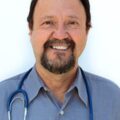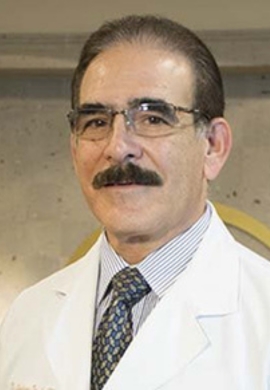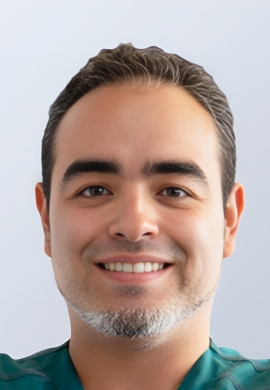Medically Reviewed By: Dr. David Warmflash (MD)
Low Cost Stem Cell Therapy for Thalassemia in Mexico
Many genetic and autoimmune diseases, for example, Thalassemia, have not had a definitive treatment. Blood transfusion has been the go-to therapy.
The solution to this problem has been found in stem cell treatment. The Hematopoietic Stem Cell Transplantation (HSCT) for Thalassemia in Mexico has opened new doors in this area.
In collaboration with the leading stem cell research center, the Medical Tourism Corporation is providing this otherwise expensive treatment at affordable prices in Mexico.
We work with the world’s leading company in stem cell therapy and research. They have helped over 4,000 people in developing countries like India. Dr. Anand Srivastava, the CEO, and co-founder is a pioneer in the field of stem cell research.
Why Stem Cell Therapy for Thalassemia?
Usually, in conditions like thalassemia, the need for blood transfusion becomes intense. But a newer, more advanced and powerful solution to such problems has now been developed.
Stem cells have the ability to differentiate into various other functional forms if need be. This means that in conditions like thalassemia, etc., these blood cells can potentially be used to produce healthy red blood cells for those with a severe form of the disease (thalassemia major) in whom other treatments have been producing diminishing returns.
Stem Cell Haematopoiesis
The data on stem cell therapy for thalassemia suggests a long-term outcome. There may be potential for applying this novel therapeutic strategy to thalassemia major in the future.
What is Thalassemia?
A thalassemia is a group of blood disorders in which there is an inadequate or absent synthesis of one type of protein chain that is part of the hemoglobin molecule.
For example, people afflicted with beta-thalassemia are deficient in the hemoglobin beta chain.
This disease is genetic. If one of the parents is a carrier, the child will inherit one defective gene out of the pair. This will lead to a form of the disease called Thalassemia Minor.
On the other hand, if both parents are carriers, the child gets a defective pair. This will cause a life-threatening condition called Thalassemia major.
| THALASSEMIA MINOR | THALASSEMIA MAJOR |
|---|---|
| Mild anemia | Severe anemia |
| Weakness | Extreme malnourishment |
| A yellowish tinge of the skin | Jaundice |
| Poor appetite | Enlarged spleen |
| Frequent infections | Major bone issues |
- An international team of researchers performed a study in 2018. The findings were published in the New England Journal of Medicine.
- According to this article, 15 patients out of 22 who were suffering from Thalassemia were able to stop transfusions altogether while others needed fewer of them.
Thalassemia can also be described on the basis of the type of Hemoglobin (Hb) chain affected. One molecule of Hb has both Alpha and Beta chains.
If the beta-globin chains are faulty, we call it beta-thalassemia. In the same way, if the alpha-globin chains are flawed, it causes alpha thalassemia. The severity of the disease will depend on the number of abnormal genes.
The Procedure of Stem Cell Therapy for Thalassemia
1. Consultation
Your condition will be examined by our multidisciplinary team of experts. This will include a study of your past medical reports along with the latest ones. The analysis will help them decide on a specific treatment plan for your condition.
2. Treatment Plan
A provisional treatment plan is discussed with the patient. Everything from the procedure to the cost is reviewed at length. If you have any questions for the doctor, this will be a good time to get them answered.
3. Preparation
Once in Mexico, you will be given assistance at every step of the way. Our case managers will help you with the stay, logistics, and documentation.
Before the actual procedure begins, the patient is made comfortable. The doctors are readily available at all times, so if you have any doubts, feel free to speak your mind.
The patient is then taken to the exam room where a full examination is done. All the vital signs should be in check. The site of injection is disinfected, the procedure begins.
4. Transplantation
The steps of the procedure are as follows:
- Extraction: Fat tissue is extracted from the donor site.
- Isolation: It is taken to the lab and stem cells are separated.
- Cultivation: Following this, the cultivation of these stem cells begins. Induced Pluripotent Stem cells are used. This means that the aging process of these cells is reversed and they are made ‘blank’ for further use.
- Induction and Infusion: Finally, the induction of the type of cell we need is done. Now, the stem cells are ready to be infused into the patient’s body.
The stem cells are activated in a closed environment using special machinery. This is done to avoid contamination. Stem cells take up the function of the damaged part of the body.
The infusion of stem cells can be done in one of the two ways given below:
- Local administration: The cells are infused directly at the target organ or tissue. This is done after a prescribed dose of chemotherapy or radiotherapy.
- Intravenous administration: In this method, the cells are administered through the veins. This will lead to an expanded blood volume. The result will be an increased number of cells reaching the target organ or tissue.
This is NOT a painful procedure. Most patients are comfortable during as well as after transplantation. If there is some discomfort or bruise-like pain post the procedure, the patient may be given painkillers.
Once the cells are infused, they work on the damaged target organ or tissue to revamp its functioning. The period of recovery will be 1-2 months after transplantation.
During this time, your condition will be monitored constantly. If there is even the slightest problem, you will be given appropriate assistance.
Why MTC for Stem Cell Therapy, Mexico?
- We have a collaboration with the pioneers in stem cell therapy.
- Our network stem cell therapy center has successfully treated about 4,000 under-privileged patients in developing countries like India.
- The patients get treatments for human degenerative diseases with unique and state-of-the-art stem cell-based therapies and products.
- We provide stem cell therapy, which is very expensive worldwide, at prices which are easy on the pocket.
- Our experienced case managers will offer assistance in arranging a stay, logistical support, as well as administrative matters.
- The managers, administrators and medical professionals dealing with our foreign patients are all fluent in English. Language will not be a problem at any point.
- Various discounts can be availed from time to time. To know more about this, please fill out the inquiry form.
About the Stem Cell Research Center
This is a company co-founded by one of the pioneers in the field of stem cell research and technology, Dr. Anand Srivastava. He has been associated with leading universities and research institutions of the USA.
His expertise in stem cell biology, protein biochemistry, molecular biology, immunology, in-utero transplantation of stem cell, tissue targeting, gene therapy, and clinical research makes him a very valuable asset to the company.
Get To Know Our Team of Experts
It is very important to be sure that the doctor you are seeking treatment from is qualified. We have an expert team of doctors at the Stem cell research center in Mexico. Here are some of their credentials:

Dr. Carlos Rodriguez
Dr. Carlos Rodriguez is a specialist in anti-aging and regenerative medicine.
His experience includes:
- 22 years in cosmetic dermatology
- 25 years as a director and manager of hospitals
- 28 years in the administration & commercialization of medical insurance
Dr. Carlos Rodriguez is certified by the American Board of Anti-Aging and Regenerative Medicine.
Educación
Universidad Autonoma de Guadalajara

Dr. Luis Ismael Del Castillo
20+ Years of Experience
Anesthesiologist
Pericia
Anesthesiology
- Anesthesiologist in “5 de Diciembre” ISSSTE Clinic, Mexicali, Baja California 1977-1986
- Anesthesiology Private Practice since 1977.
- Founder of the Program Cleft Lip and Cleft Palate, Faculty of Dentistry, U.A.B.C Mexicali, Baja California 1995-2005
- Professor of “Dentistry Urgencies” Faculty of Dentistry, U.A.B.C 1999-2005 and 2011 onwards.

Dr. Gustavo De la Mora
Dr. Gustavo Adolfo is an internationally trained orthopedic surgeon in Los Algodones.
He has studied Advanced Arthroscopic Knee and Shoulder Surgery in Massachusetts, USA.
Dr. Adolfo is the President of the CMOT Certification examining jury and a delegate for the Mexican Council of Orthopedics and Traumatology.
He has spoken at meetings and symposiums in San Diego, Los Angeles, Las Vegas, Miami, and various locations in Mexico.
Educación
Universidad Autónoma de Guadalajara
Membresías
- American Academy of Orthopaedic Surgeons (AAOS)
- Ortopedia Integral Mexicali, local surgeons group

Dr. Daniel Garza
Dr. Garza specializes in metabolic control for diabetic and hypertensive patients and holds a diploma in Diabetology.
He has experience in patient admission, outpatient services, and emergencies at various private hospitals.
He has extensive expertise in regenerative medicine and stem cell therapy.
He has been the Medical Director of GIOSTAR Mexico in Los Algodones since 2017.
Educación
Autonomous University of Guadalajara

Dr. Felipe Contla
Dr. Contla is the Medical Director at Baja Surgery Center and an Anesthesiology Specialist at GIOSTAR Mexico.
He is certified by the Mexican Council of Anesthesiology.
He has extensive experience in pain management.
He uses this expertise to improve results in aesthetic procedures like Botox and fillers.
Educación
Autonomous University of Baja California
Membresías
- Mexican Council of Anaesthesiology
Our Network Stem Cell Clinics in Mexico
To practice stem cell transplantation, special permits need to be taken from the authorities. In our network, we have three such centers in Mexico itself. These are located in three of the main cities of the country.
1. Tijuana
- The Del Prado Hospital, Tijuana is a world-class facility.
- It is the only hospital which has received a Certification of Excellence by the Health Secretary of Mexico.
- The center is 15 minutes away from the San Ysidro Port of entry.
2. Guadalajara
- The state-of-the-art San Javier Hospital in Guadalajara has been deemed as a Specialty Hospital by the Mexican General Health Council.
- It is located near the International Airport, which makes it convenient for our foreign patients.
3. Los Algodones
- Our network center in Los Algodones is known for its Stem Cell Spa services.
- It has a very comfortable ambience.
- The center is located just a few minutes away from the Andrade border crossing.
Frequently Asked Questions (FAQs) on Stem Cell Therapy
Stem cells are cells from which more specialized cells are produced. They are the raw material of the body.
Embryonic Stem Cells are part of an early embryo. These cells are pluripotent. This means they can differentiate and adapt to take up the function of any kind of cell in the body. This makes them useful in regenerative medicine.
Adult Stem Cells are found in some adult tissues like bone marrow and fat. These cells are Multipotent; they can give rise to some but not all kinds of body cells.
When infused into the body, these cells act on the target tissue which is damaged, to create new, healthy cells of the same variety.
Stem cell therapy has been used for many decades to treat certain hematological disorders and certain immunodeficiency disorders and is now being tested for treating numerous other disease categories. For example, autoimmune, cardiovascular, neurological, and blood-related disorders are all potential settings in which stem cell therapy appears promising. Consequently, clinical testing is in various stages, depending on the condition.
Patients with active infections or cancer might not be good candidates. The first step should be to get definitive treatment for these conditions.
Patients being considered as test subjects in stem cell therapy clinical trials require evaluation with respect to numerous factors, including potential drug interactions.
The treatment for Thalassemia usually includes radiotherapy or chemotherapy as well. This is followed by stem cell transplantation. The whole process usually takes about 2 months.
You might need more than one sitting, depending on your condition. The schedule for your sittings will be prepared after proper examination.
The outcome will depend on a variety of factors. The extent of damage and the tissue or organ involved are just some of them. Most people respond well to this therapy.
As with any other medical procedure, there can be no definitive result. However, most of our patients have benefited from this therapy.
The only major concern in such a procedure is the rejection of infused cells. this is called graft versus host reaction. Although rare, proper matching needs to be done to avoid it.
This is a subjective matter. Everyone will have a different extent, location, and duration of disease. So, depending on all these factors, the medical experts will come to a provisional plan. This plan will then be discussed with you and finalized.
Bone marrow transplantation is stem cell transplantation of hematopoietic cells from bone marrow. Other categories of stem cell therapy exist that utilize other types of stem cells for the purpose of generating cells other than blood cells.
These stem cells can be extracted from different parts of the body. If they are taken from the bone marrow, the process will be known as Bone marrow transplantation.
However, if stem cells are obtained from tissues like fat tissue, placenta, cord tissue, amniotic fluid, teeth, etc., it is called Stem Cell transplantation. Therefore, the difference only lies in the site from where the stem cells are taken.
At our network clinics, the fat tissue is first extracted, and stem cells are isolated and cultivated. This is followed by the reverse aging process, which assigns a function to the cells. These prepared cells are then infused into the patient's body.
The two main complications of the thalamus are iron overload and infections. Iron overload occurs due to repeated blood transfusions, which is fairly common in people with thalassemia major. This will lead to hemochromatosis, the accumulation of this iron in various organs, which can lead to organ failure.
Further, this will lead to organ failure. Other complications include bone deformities, heart problems, enlarged spleen, and slowed growth rates.
In the process of stem cell transplantation, one of the most important considerations is sterilization. It can make or break the case. This is why stem cell clinics have isolation rooms.
Here, no outside personnel is allowed without wearing a sterilized gown. The medical staff entering the room is required to wash and sanitize their hands.








